- Tropical Foliage Plants
- 1. Monstera deliciosa
- 2. Calathea
- 3. Philodendron
- 4. Snake Plant
- 5. Ficus lyrata
- Flowering Houseplants
- Roses
- African Violets
- Orchids
- Geraniums
- Begonias
- Cyclamen
- Succulents and Cacti
- Succulents
- Cacti
- Hanging Plants
- 1. Pothos
- 2. Spider Plant
- 3. String of Pearls
- 4. Boston Fern
- 5. English Ivy
- 6. String of Hearts
- 7. Orchids
- 8. Burro’s Tail
- Air Plants
- Characteristics of Air Plants
- Caring for Air Plants
- Displaying Air Plants
- Aroids
- Popular Aroid Varieties
- Aroid Care Tips
- Conclusion
- Bonsai Trees
- Herbs and Edibles
- 1. Basil
- 2. Mint
- 3. Rosemary
- 4. Chives
- 5. Green Onions
- 6. Parsley
- 7. Microgreens
- 8. Lettuce
- Q&A:
- What are the different types of indoor plants?
- What are some examples of flowering plants that can be grown indoors?
- Are there any indoor plants that are low maintenance?
- What are the benefits of having indoor succulent plants?
- How do I take care of air plants?
- Can I grow herbs indoors?
- Which indoor plants are best for improving air quality?
- Video: DREAM BIG in a tiny Tropical Garden (280 sqft) + Pro Gardening Tips ft. the legendary Farren Wayne
Welcome to Part 2 of our comprehensive guide to indoor plant groups! In this article, we will continue exploring the different types of plants that thrive indoors. Whether you’re a seasoned green thumb or just starting your indoor plant journey, this guide will help you navigate the diverse world of indoor plants.
1. Succulents and Cacti: Succulents and cacti are known for their ability to store water in their leaves or stems, making them perfect for those with a busy lifestyle. They come in a variety of shapes and sizes, from small, low-maintenance succulents to tall, spiky cacti.
2. Ferns: Ferns are a popular choice for indoor plants due to their lush foliage and ability to thrive in low-light conditions. They add a touch of elegance and natural beauty to any space, making them a favorite among plant enthusiasts.
3. Orchids: Orchids are known for their exquisite beauty and delicate blooms. While they may require a bit more care and attention than other plants, their stunning flowers make them a worthwhile addition to any indoor garden.
4. Air Plants: Air plants, also known as Tillandsia, are unique plants that can survive without soil. They absorb nutrients and moisture from the air around them, making them incredibly easy to care for. They are perfect for those looking for a low-maintenance plant that adds a touch of whimsy to their indoor space.
Remember, when selecting indoor plants, it’s important to consider factors such as the lighting conditions in your home, the amount of care and attention you can provide, and your personal aesthetic preferences. It’s also a good idea to research each plant’s specific needs and requirements before bringing them home.
Stay tuned for Part 3 of our comprehensive guide to indoor plant groups, where we will explore even more types of plants that can thrive indoors. Happy gardening!
Tropical Foliage Plants
Tropical foliage plants are a popular choice for indoor gardening due to their lush and vibrant leaves, which can add a touch of the tropics to any space. These plants thrive in warm and humid conditions, making them perfect for indoor environments.
1. Monstera deliciosa
The Monstera deliciosa, also known as the Swiss cheese plant, is a tropical foliage plant with large, glossy, and deeply lobed leaves. It is a popular choice for adding a tropical vibe to any room. The Monstera deliciosa can tolerate low light conditions but thrives in bright, indirect light. It is important to provide it with adequate support, such as a moss pole, as it is a climbing plant.
2. Calathea
Calathea is a diverse genus of tropical foliage plants that are known for their colorful and patterned leaves. There are many different varieties of Calathea, each with its own unique leaf patterns. These plants are perfect for adding a pop of color and interest to any indoor space. Calathea plants prefer bright, indirect light and high humidity.
3. Philodendron
Philodendrons are a popular choice for indoor gardening due to their ease of care and beautiful foliage. These plants have large, glossy leaves that come in various shapes and sizes. They can tolerate a wide range of light conditions, from low light to bright, indirect light. Philodendrons are known for their ability to purify the air and are considered one of the best air-purifying plants.
4. Snake Plant
The Snake Plant, also known as Sansevieria, is a tropical foliage plant with long, upright leaves that are typically dark green with light green horizontal stripes. It is a hardy plant that can tolerate a wide range of light conditions and is known for its ability to purify the air by removing toxins such as formaldehyde and benzene. Snake plants are a great choice for beginners as they are low maintenance and can survive in conditions with minimal care.
5. Ficus lyrata
Ficus lyrata, also known as the fiddle-leaf fig, is a popular tropical foliage plant with large, violin-shaped leaves. It is an excellent choice for adding a touch of drama and sophistication to any space. Ficus lyrata prefers bright, indirect light and well-draining soil. This plant requires regular watering and thrives in humid environments.
These are just a few examples of the many tropical foliage plants available for indoor gardening. Each plant has its own unique characteristics and care requirements, so make sure to research and choose the ones that best suit your space and care abilities.
Flowering Houseplants
Flowering houseplants are a popular choice for indoor gardens as they bring color and beauty to any space. Whether you’re looking for vibrant blooms or delicate flowers, there are a variety of flowering houseplants to choose from. Here are some of the most common types:
Roses
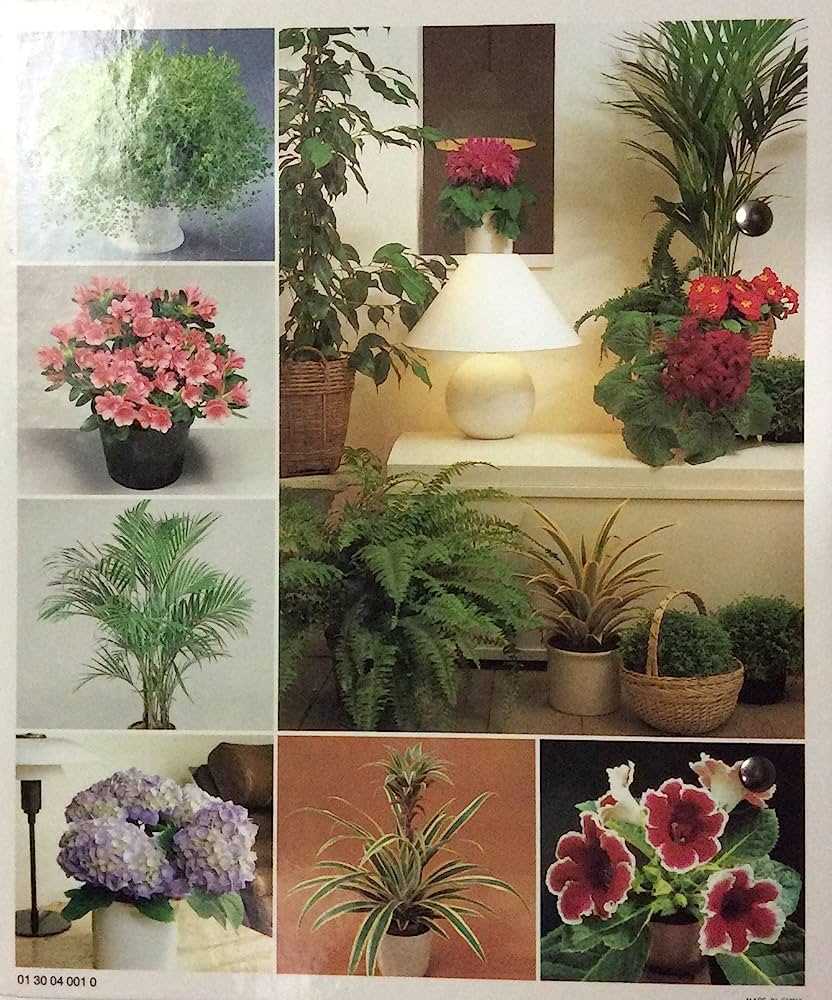
Roses are known for their exquisite beauty and fragrance. While they are typically grown outdoors, certain varieties can be successfully cultivated as indoor houseplants. Miniature roses are a popular choice for indoor gardening, as they do well in containers and require less space than standard rose bushes. They come in a range of colors, including red, pink, yellow, and white, allowing you to create a stunning display in your home.
African Violets
African violets are a classic choice for indoor flowering plants. With their velvety leaves and delicate flowers, they add a touch of elegance to any room. These plants prefer bright, indirect light and should be watered from the bottom to prevent damage to the leaves. African violets come in a variety of colors, including purple, pink, white, and blue, making them a versatile addition to your home.
Orchids
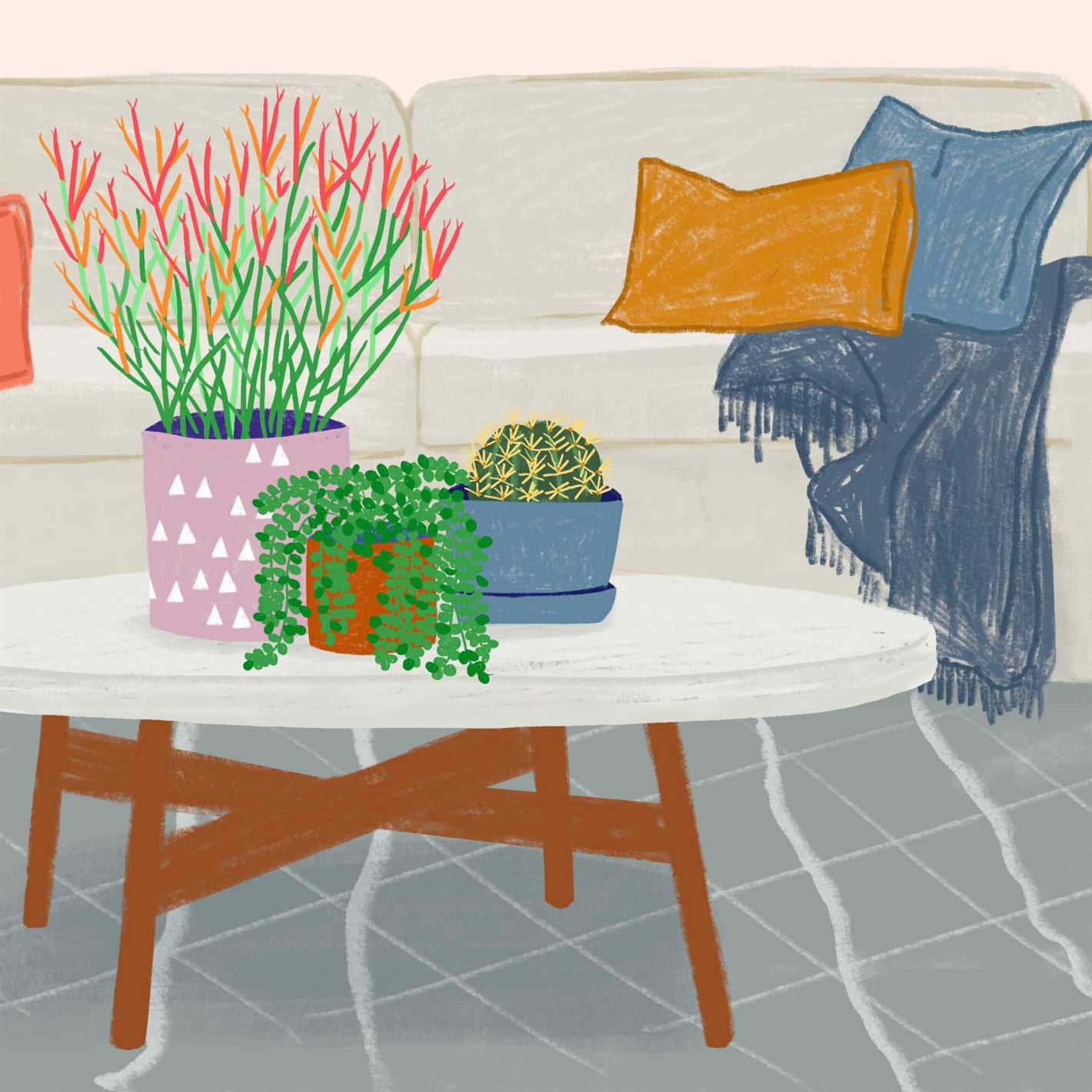
Orchids are renowned for their exotic beauty and are often considered a symbol of luxury. There are many different types of orchids available, each with its own unique shape, color, and scent. While orchids can be a bit more challenging to grow indoors, with the right care and conditions, they can reward you with breathtaking blooms. These plants require bright, indirect light and a well-draining potting mix.
Geraniums
Geraniums are a popular choice for both indoor and outdoor gardens due to their vibrant flowers and low maintenance requirements. These plants come in a variety of colors, including red, pink, white, and purple. Geraniums thrive in bright light and should be watered only when the top inch of soil feels dry. They are also known for their ability to repel mosquitoes, making them a practical choice for both beauty and function.
Begonias
Begonias are known for their stunning foliage as well as their charming flowers. These plants come in a variety of leaf shapes and colors, making them a versatile choice for any indoor garden. Rex begonias are particularly popular for their vibrant and patterned leaves. Begonias prefer bright, indirect light and should be watered when the top inch of soil feels dry.
Cyclamen
Cyclamen plants are known for their unique blossoms, which come in shades of white, pink, red, and purple. These plants prefer cool temperatures, making them an ideal choice for indoor gardens. Cyclamen blooms can last for several weeks, adding a burst of color to your space during the winter months. They require bright, indirect light and should not be overwatered.
Remember to choose flowering houseplants that are suitable for the lighting conditions in your home and to provide them with the appropriate care. With proper maintenance, these plants will reward you with their beautiful blooms.
Succulents and Cacti
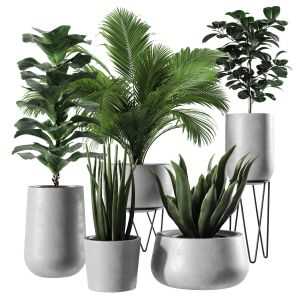
Succulents and cacti are a popular group of indoor plants known for their unique and striking appearance. They have thick, fleshy leaves or stems that allow them to store water, making them well-suited for dry climates. These plants come in a wide variety of shapes, sizes, and colors, and their ability to thrive in different conditions makes them a great choice for both experienced and beginner plant enthusiasts.
Succulents
Succulents are plants that store water in their leaves, stems, or roots. This adaptation allows them to survive in arid environments, such as deserts, where water is scarce. Here are some common types of succulents:
- Aloe Vera: This popular succulent is known for its medicinal properties and is often used in skincare products. It has thick, spiky leaves that can vary in color from green to gray.
- Echeveria: Echeveria is a genus of succulent plants that are native to Mexico and Central America. They have rosette-shaped leaves that can come in various colors, such as green, red, blue, or purple.
- Jade Plant: Also known as Crassula ovata, the jade plant is a popular choice for indoor gardens. It has thick, oval-shaped leaves and can grow into a small tree with proper care.
- Sedum: Sedums are a large group of succulent plants that come in a wide range of shapes and forms. They are easy to care for and can be grown both indoors and outdoors.
Cacti
Cacti are a type of succulent, but they have their own unique characteristics that set them apart. They are known for their spiky, needle-like structures called “spines,” which help them conserve water and protect them from predators. Here are some popular types of cacti:
- Barrel Cactus: As the name suggests, barrel cacti have a cylindrical shape with prominent ridges. They are slow-growing and can live for many years.
- Prickly Pear: Prickly pear cacti are known for their flat, pad-like stems that are covered in spines. They can produce vibrant flowers and edible fruits.
- Saguaro: These iconic cacti are native to the Sonoran Desert and can grow to be quite tall, reaching heights of up to 50 feet. They have a columnar shape and arms that can develop as they mature.
- Christmas Cactus: The Christmas cactus is a popular choice for holiday decoration due to its ability to bloom in winter. It has flattened stems that produce colorful flowers.
Both succulents and cacti require similar care, including well-draining soil, plenty of sunlight, and infrequent watering. These low-maintenance plants can add a touch of unique beauty to any indoor space.
Hanging Plants
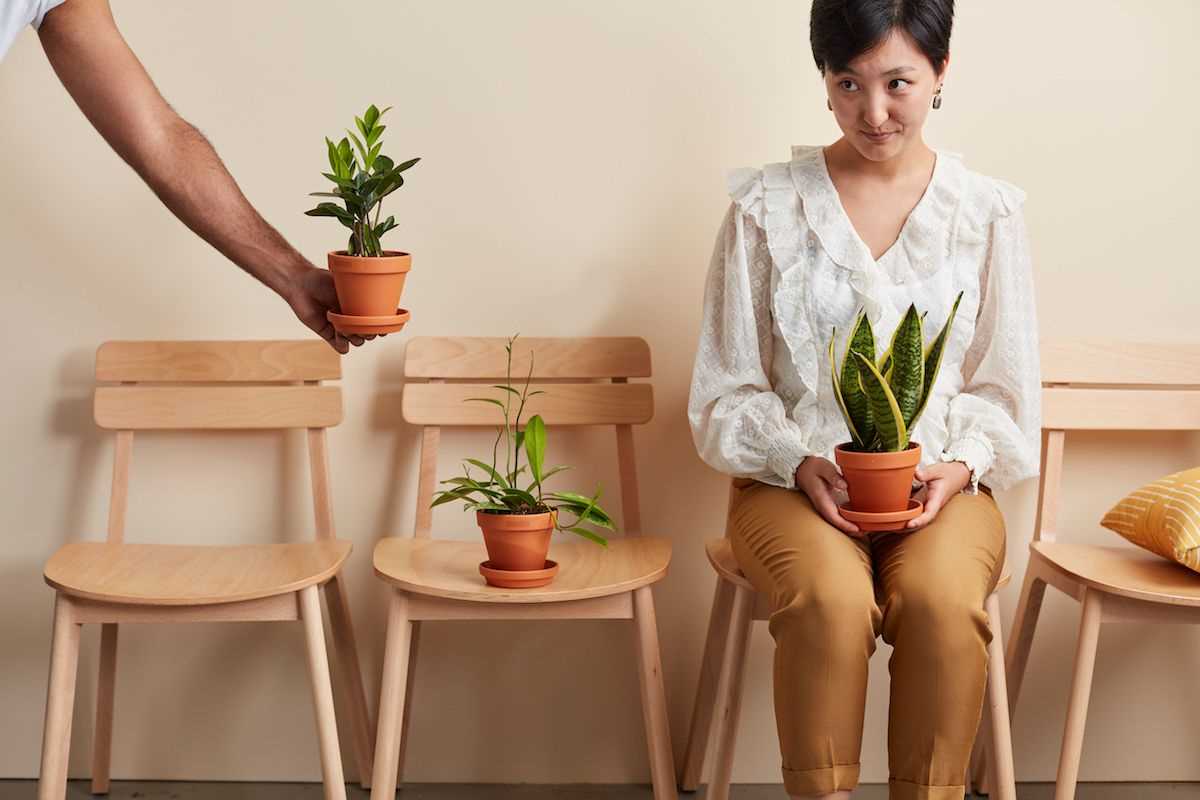
1. Pothos
The Pothos plant, also known as Devil’s Ivy, is one of the most popular hanging plants. It has long trailing vines that can grow several feet in length. Pothos plants are known for their ability to purify the air and are relatively easy to care for. They prefer bright, indirect light and only need to be watered when the top inch of soil becomes dry.
2. Spider Plant
Spider plants are another common choice for hanging plants. They have long, arching leaves that are green with white stripes. Spider plants are known for their ability to produce “babies” or offshoots that can be easily propagated and grown into new plants. They prefer bright, indirect light and should be watered when the top inch of soil is dry.
3. String of Pearls
The String of Pearls plant, also known as Senecio rowleyanus, is a unique hanging plant that features cascading stems lined with small, spherical leaves that resemble pearls. It is a succulent plant that prefers bright, indirect light and should be watered when the soil is completely dry. It is important to be especially careful not to over-water this plant, as it is prone to root rot.
4. Boston Fern
Boston Ferns are elegant hanging plants that have delicate, feathery fronds. They prefer bright, indirect light and high humidity. Boston Ferns should be watered regularly to keep the soil consistently moist, but not soggy. They can benefit from occasional misting to increase humidity levels.
5. English Ivy
English Ivy is a classic hanging plant that features cascading vines with small, green leaves. It is known for its ability to tolerate low light conditions, making it a great choice for indoor environments with limited natural light. English Ivy should be watered regularly, allowing the top inch of soil to dry out between waterings.
6. String of Hearts
The String of Hearts plant, also known as Ceropegia woodii, is a trailing succulent with heart-shaped leaves. It is a low-maintenance hanging plant that is perfect for beginners. String of Hearts plants prefer bright, indirect light and should be watered when the soil is dry. They are drought-tolerant and can handle periods of neglect.
7. Orchids
Orchids are not typically thought of as hanging plants, but certain varieties, such as the Phalaenopsis orchid, can be grown in hanging baskets. They produce stunning flowers in a range of colors and require specific care. Orchids need bright, indirect light and should be watered sparingly, allowing the potting medium to dry out slightly between waterings.
8. Burro’s Tail
The Burro’s Tail plant, also known as Sedum morganianum, is a unique hanging succulent that features long trailing stems covered in small, plump leaves. It is a drought-tolerant plant that prefers bright, indirect light and well-draining soil. Burro’s Tail plants should be watered thoroughly but infrequently, allowing the soil to dry out between waterings.
- Some hanging plants, such as Pothos and Spider Plants, are excellent air purifiers.
- Hanging plants can add a touch of greenery to any room and can help make the most of limited space.
- When choosing a hanging plant, consider the lighting conditions in your space and the care requirements of the plant.
- Ensure that the basket or container you choose for your hanging plant has adequate drainage to prevent overwatering.
- Regularly inspect and prune your hanging plants to remove dead or damaged foliage and promote healthy growth.
Air Plants
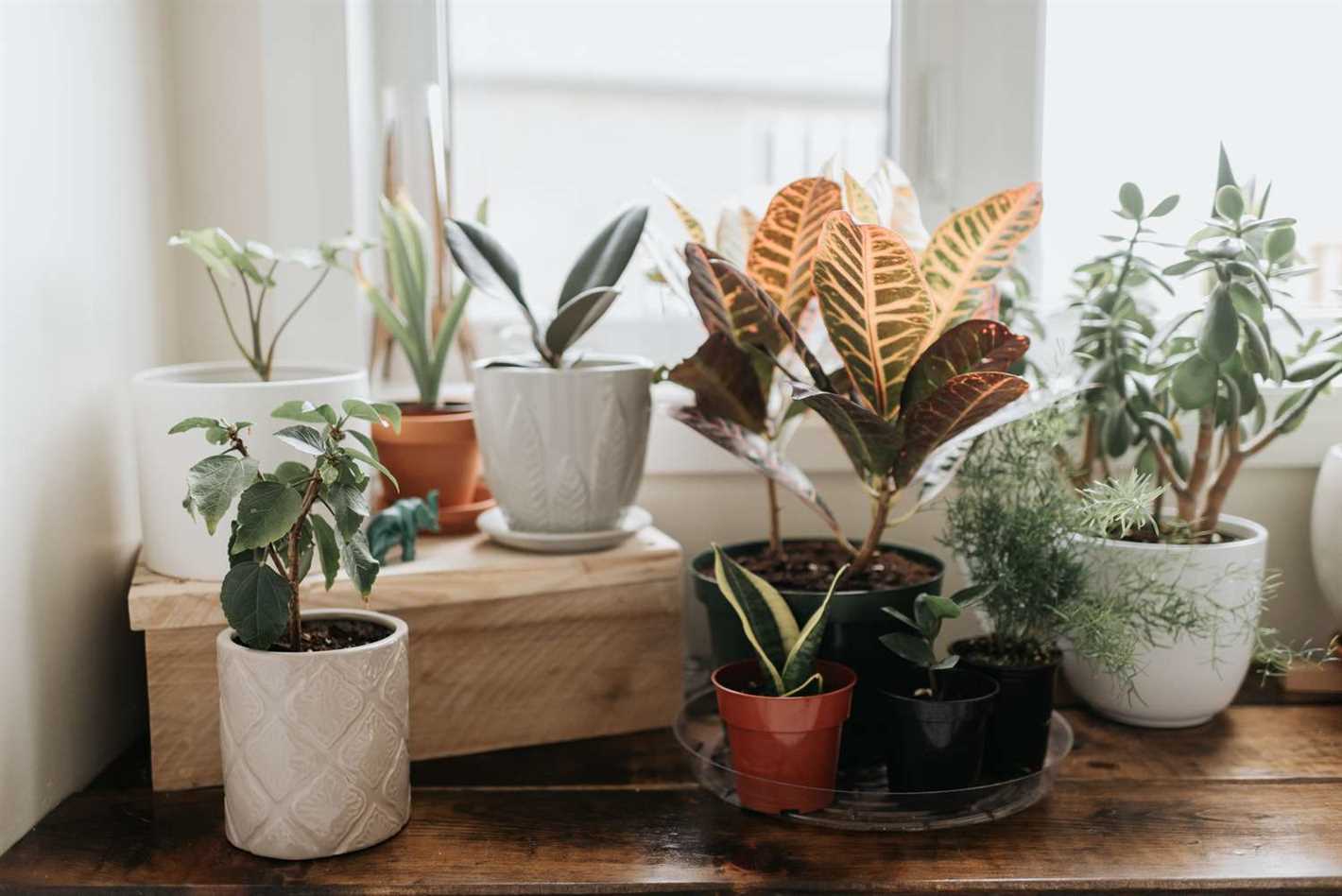
Air plants, also known as Tillandsia, are a unique group of indoor plants that don’t require soil to grow. Instead, they extract nutrients and moisture from the air and rainwater. This characteristic makes them a popular choice for those who have limited space or want a low-maintenance plant.
Characteristics of Air Plants
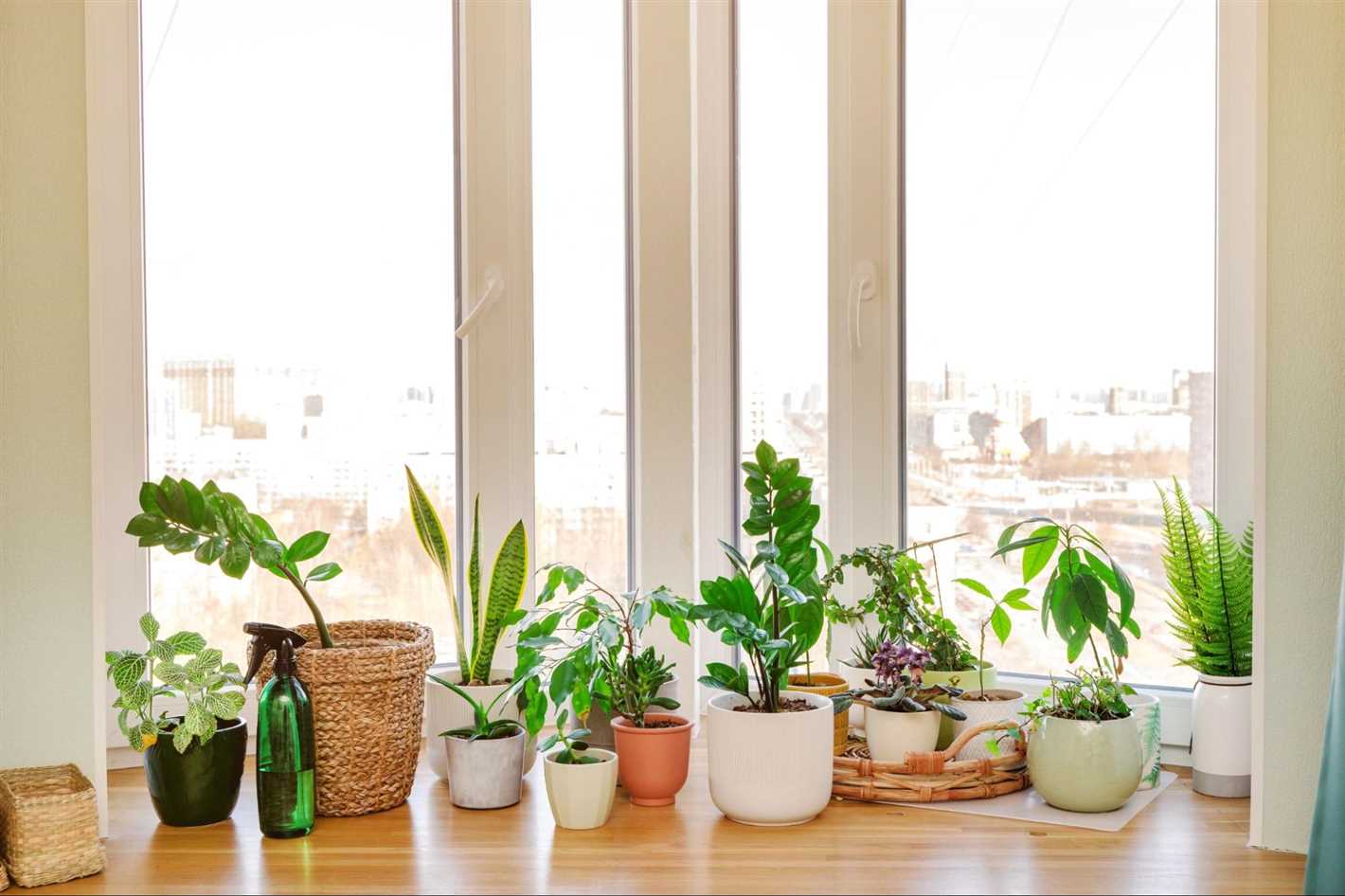
- Air plants belong to the Bromeliad family, which includes over 500 species.
- They are typically small in size, with most species measuring less than 12 inches in height.
- Instead of roots, air plants have specialized structures called trichomes, which absorb water and nutrients from the air.
- They come in a variety of shapes, colors, and textures, ranging from fuzzy to spiky.
- Most air plants flower once in their lifetime. The flowers are often vibrant and long-lasting.
Caring for Air Plants
Caring for air plants is relatively easy, as they have minimal requirements. Here are some tips for keeping your air plants healthy:
- Light: Air plants prefer bright, indirect light. Place them near a window or in a well-lit room, but avoid direct sunlight, as it can scorch their leaves.
- Water: Mist your air plants with water once or twice a week. Alternatively, you can soak them in room temperature water for 20-30 minutes every two weeks. Allow them to dry completely before placing them back in their display.
- Air Circulation: Good air circulation is essential for air plants, as it helps prevent rot and mildew. Avoid placing them in enclosed containers or areas with stagnant air.
- Temperature: Air plants thrive in temperatures between 50°F and 90°F (10°C and 32°C). Avoid exposing them to extreme temperatures or drafts.
- Fertilizer: Air plants require minimal fertilization. You can mist them with a bromeliad or air plant fertilizer once every few months to provide them with a nutrient boost.
Displaying Air Plants
Due to their unique growth habit, air plants can be displayed in various creative ways:
- Mounting them on driftwood, rocks, or seashells.
- Placing them in glass terrariums or hanging them in glass globes.
- Creating air plant arrangements using wire or string.
- Attaching them to magnets and displaying them on metal surfaces.
- Using them in vertical gardens or living walls.
With their intriguing appearance and minimal care requirements, air plants are a fantastic addition to any indoor plant collection. Their unique growth habits and ability to thrive without soil make them a great conversation starter and a popular choice among plant enthusiasts.
Aroids
Aroids are a diverse group of plants with unique foliage and varied growth habits. They belong to the family Araceae, which consists of more than 100 genera and thousands of species. Aroids are known for their striking leaves, which often feature stunning patterns and colors. Many aroids are popular indoor plants due to their ability to thrive in low light conditions and their air-purifying qualities.
Popular Aroid Varieties
- Monstera deliciosa: Also known as the Swiss cheese plant, this aroid has large, glossy leaves with natural holes, giving them a distinctive appearance. It is a popular choice for interior spaces and can grow to be quite large.
- Philodendron: Philodendrons come in various sizes and shapes, but they are all cherished for their attractive, heart-shaped leaves. These aroids are adaptable and can thrive in different light conditions.
- Anthurium: Anthuriums are known for their vibrant, spathaceous flowers, which come in shades of red, pink, and white. Their glossy, heart-shaped leaves make them a popular choice for indoor gardening.
Aroid Care Tips
When it comes to caring for aroids, here are some general guidelines to keep in mind:
- Light: Most aroids prefer bright, indirect light. Avoid placing them in direct sunlight, as it can scorch their leaves.
- Watering: Aroids like to be evenly moist but not overly saturated. Allow the top inch or two of soil to dry out before watering again.
- Humidity: Aroids generally appreciate higher humidity levels. You can increase humidity by misting the leaves or placing the plants on a tray filled with water and pebbles.
- Fertilization: Aroids benefit from regular fertilization during the growing season. Use a balanced, water-soluble fertilizer and follow the package instructions for application rates.
- Propagation: Aroids can be propagated through methods such as stem cuttings or division. Research specific propagation techniques for each species to ensure success.
Conclusion
Aroids are a captivating group of indoor plants that can add beauty and greenery to any space. With their unique foliage and relatively easy care requirements, they are a favorite choice among plant enthusiasts. Whether you opt for the popular Monstera deliciosa or try your hand at cultivating an Anthurium, aroids are sure to bring joy and personality to your indoor garden.
Bonsai Trees
Bonsai trees are miniature trees that are carefully cultivated and pruned to retain their small size. They are often considered an art form and have a long history in Japanese culture. Bonsai trees can be grown indoors and require specific care to thrive.
There are several different types of bonsai trees, each with their own unique characteristics. Some common types include:
- Ficus Bonsai: Also known as the Ficus retusa, this bonsai tree features dark, shiny leaves and a thick, often twisted trunk. It is a popular choice for beginners due to its resilience and easy care requirements.
- Juniper Bonsai: Juniper bonsai trees have needle-like leaves and often have a gnarled appearance. They are known for their ability to withstand a wide range of growing conditions.
- Japanese Maple Bonsai: Japanese maple bonsai trees have vibrant red or orange leaves, making them a stunning choice for indoor bonsai displays. They require a bit more care and attention compared to other types of bonsai.
- Bald Cypress Bonsai: Bald cypress bonsai trees have delicate, feathery foliage and a beautiful, twisting trunk. They are native to the United States and are popular among bonsai enthusiasts.
To successfully grow and care for bonsai trees, it is important to provide them with the proper light, temperature, humidity, and watering conditions. Bonsai trees often require more frequent watering compared to regular houseplants, and they should be placed in areas with indirect sunlight.
In addition to proper care, bonsai trees also need regular pruning, shaping, and repotting to maintain their desired appearance. These techniques can be learned through bonsai tree workshops or with the help of experienced bonsai enthusiasts.
Bonsai trees can bring a sense of beauty and tranquility to any indoor space. With the right care and attention, they can thrive and become a stunning centerpiece in your home or office.
Herbs and Edibles
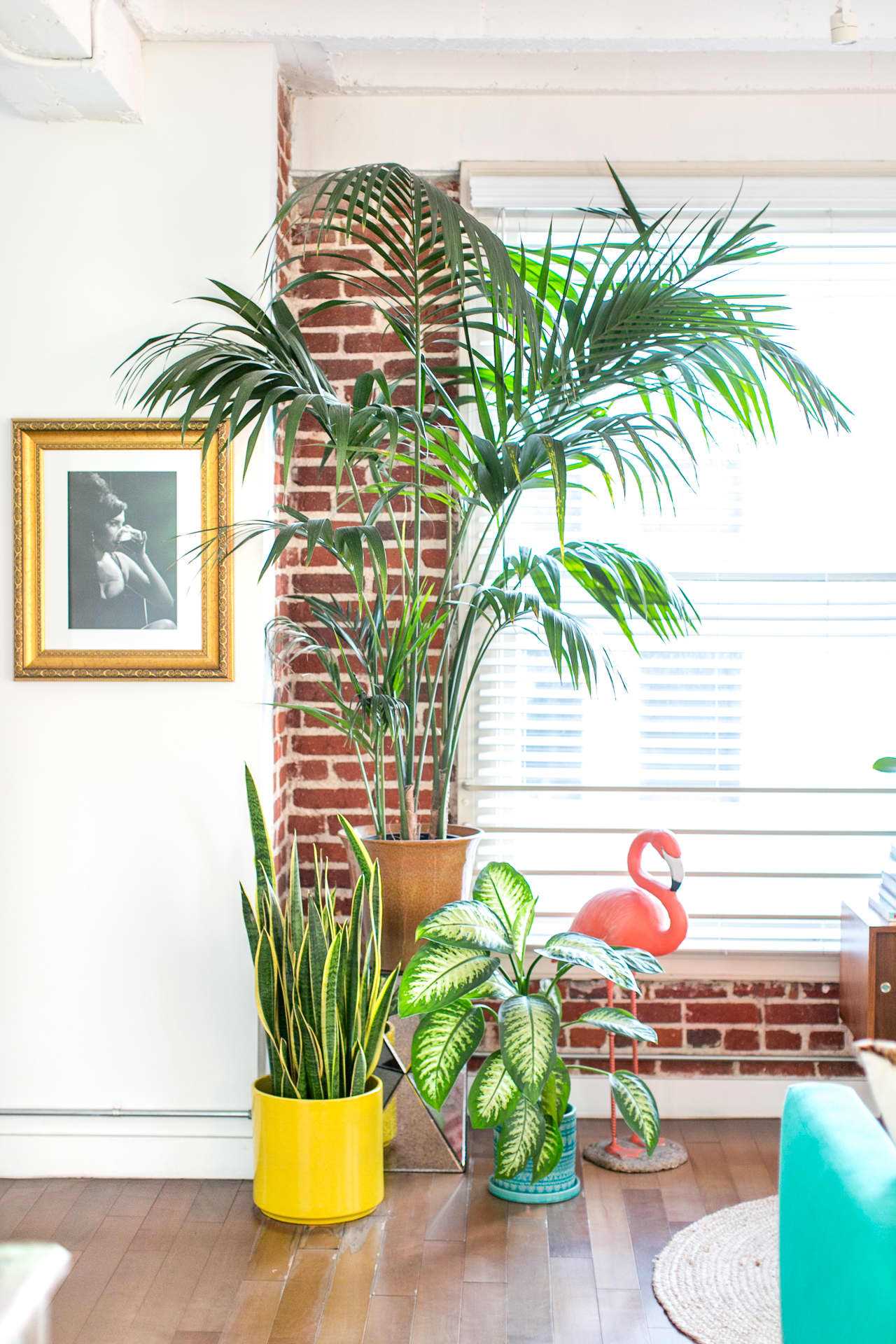
Indoor herb gardens are becoming increasingly popular as people discover the joy of growing their own herbs at home. Not only do these plants add beauty and fragrance to your indoor space, but they also provide fresh ingredients for cooking and medicinal purposes. Here are some popular herbs and edibles that can thrive indoors:
1. Basil
Basil is a versatile herb that comes in many different varieties, each with its own unique flavor. It can be used in a variety of dishes, from Italian pasta sauces to Thai cuisine. Basil plants prefer warm temperatures and bright, indirect sunlight.
2. Mint
Mint is a refreshing herb that is commonly used in teas, cocktails, and desserts. It grows quickly and can easily take over a garden if not properly contained. Mint plants prefer partial shade and moist soil.
3. Rosemary
Rosemary is a fragrant herb that adds a wonderful aroma to dishes like roasted meats and vegetables. It thrives in bright, sunny locations and prefers well-drained soil.
4. Chives
Chives are small, onion-like herbs that add a mild flavor to dishes. They are commonly used in soups, salads, and as a garnish. Chives prefer bright, indirect sunlight and well-drained soil.
5. Green Onions

Green onions, also known as scallions, are a staple in many cuisines around the world. They have a mild flavor and can be used in salads, stir-fries, and as a garnish. Green onions prefer bright, indirect sunlight and regular watering.
6. Parsley
Parsley is a versatile herb that is used in a variety of dishes, from soups and stews to sauces and salads. It has a bright, fresh flavor and prefers bright, indirect sunlight and well-drained soil.
7. Microgreens
Microgreens are young, tender greens that are harvested when they are only a few inches tall. They are packed with nutrients and can be used as a garnish or added to salads and sandwiches for a burst of flavor. Microgreens prefer bright, indirect sunlight and well-drained soil.
8. Lettuce
Lettuce is a leafy green that is commonly used in salads and sandwiches. It comes in many different varieties, from loose-leaf to romaine. Lettuce plants prefer cooler temperatures and bright, indirect sunlight.
When growing herbs and edibles indoors, it’s important to provide them with the right amount of light, water, and nutrients. Be sure to choose a suitable container and use well-drained soil to prevent root rot. With proper care, you can enjoy a bountiful harvest of fresh herbs and vegetables right from your indoor garden!
Q&A:
What are the different types of indoor plants?
The different types of indoor plants include flowering plants, foliage plants, succulent plants, and air plants. Each type has its own unique characteristics and care requirements.
What are some examples of flowering plants that can be grown indoors?
Some examples of flowering plants that can be grown indoors are orchids, African violets, peace lilies, and begonias. These plants add color and beauty to any indoor space.
Are there any indoor plants that are low maintenance?
Yes, there are several indoor plants that are low maintenance. Some examples include snake plants, ZZ plants, and pothos plants. These plants require minimal care and can thrive in various indoor environments.
What are the benefits of having indoor succulent plants?
Indoor succulent plants have several benefits. They have unique and interesting shapes, they require minimal watering, and they can add a touch of greenery to any indoor space. Additionally, succulents are known for their air-purifying properties.
How do I take care of air plants?
Air plants are relatively easy to care for. They do not require soil and can be placed in various creative displays. To care for air plants, you need to mist them with water every few days and provide them with indirect light. They also benefit from occasional soaking in water.
Can I grow herbs indoors?
Yes, you can definitely grow herbs indoors. Some popular herbs that can be grown indoors include basil, rosemary, thyme, and mint. Indoor herb gardens can provide fresh herbs for cooking and add a pleasant aroma to your home.
Which indoor plants are best for improving air quality?
Several indoor plants are known for their air-purifying properties. Some examples include spider plants, snake plants, peace lilies, and bamboo palms. These plants can help remove toxins from the air and enhance indoor air quality.
Video:
DREAM BIG in a tiny Tropical Garden (280 sqft) + Pro Gardening Tips ft. the legendary Farren Wayne







